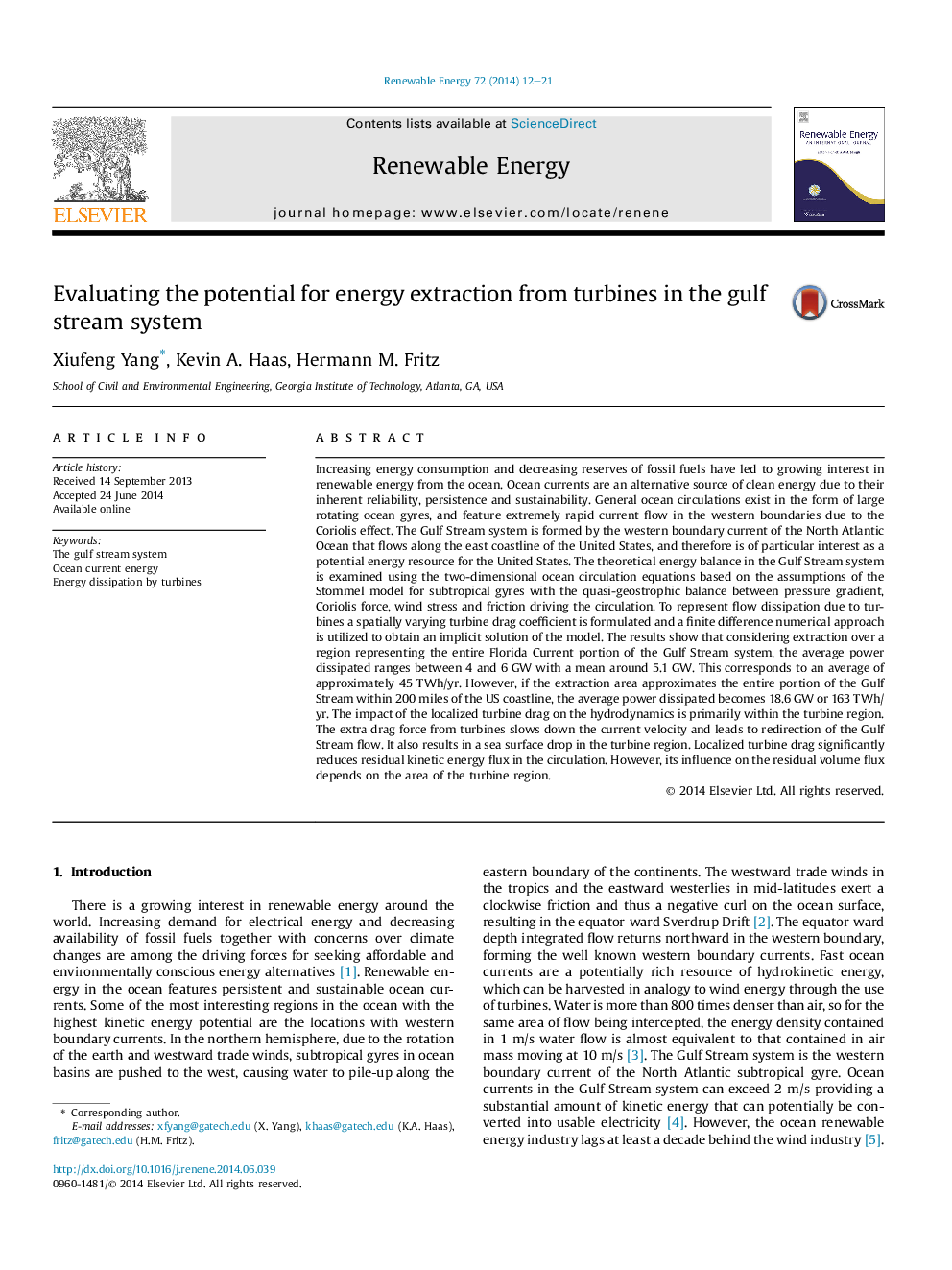| Article ID | Journal | Published Year | Pages | File Type |
|---|---|---|---|---|
| 6767847 | Renewable Energy | 2014 | 10 Pages |
Abstract
Increasing energy consumption and decreasing reserves of fossil fuels have led to growing interest in renewable energy from the ocean. Ocean currents are an alternative source of clean energy due to their inherent reliability, persistence and sustainability. General ocean circulations exist in the form of large rotating ocean gyres, and feature extremely rapid current flow in the western boundaries due to the Coriolis effect. The Gulf Stream system is formed by the western boundary current of the North Atlantic Ocean that flows along the east coastline of the United States, and therefore is of particular interest as a potential energy resource for the United States. The theoretical energy balance in the Gulf Stream system is examined using the two-dimensional ocean circulation equations based on the assumptions of the Stommel model for subtropical gyres with the quasi-geostrophic balance between pressure gradient, Coriolis force, wind stress and friction driving the circulation. To represent flow dissipation due to turbines a spatially varying turbine drag coefficient is formulated and a finite difference numerical approach is utilized to obtain an implicit solution of the model. The results show that considering extraction over a region representing the entire Florida Current portion of the Gulf Stream system, the average power dissipated ranges between 4 and 6Â GW with a mean around 5.1Â GW. This corresponds to an average of approximately 45Â TWh/yr. However, if the extraction area approximates the entire portion of the Gulf Stream within 200 miles of the US coastline, the average power dissipated becomes 18.6Â GW or 163Â TWh/yr. The impact of the localized turbine drag on the hydrodynamics is primarily within the turbine region. The extra drag force from turbines slows down the current velocity and leads to redirection of the Gulf Stream flow. It also results in a sea surface drop in the turbine region. Localized turbine drag significantly reduces residual kinetic energy flux in the circulation. However, its influence on the residual volume flux depends on the area of the turbine region.
Keywords
Related Topics
Physical Sciences and Engineering
Energy
Renewable Energy, Sustainability and the Environment
Authors
Xiufeng Yang, Kevin A. Haas, Hermann M. Fritz,
